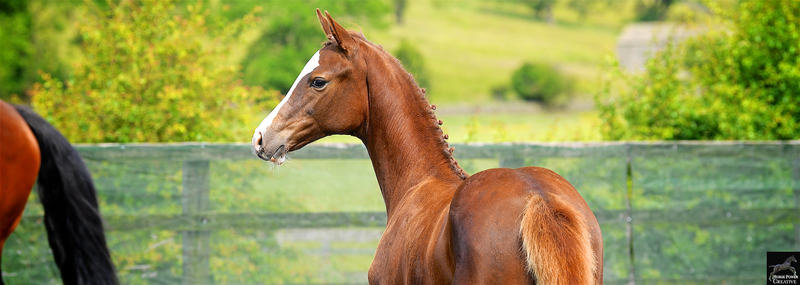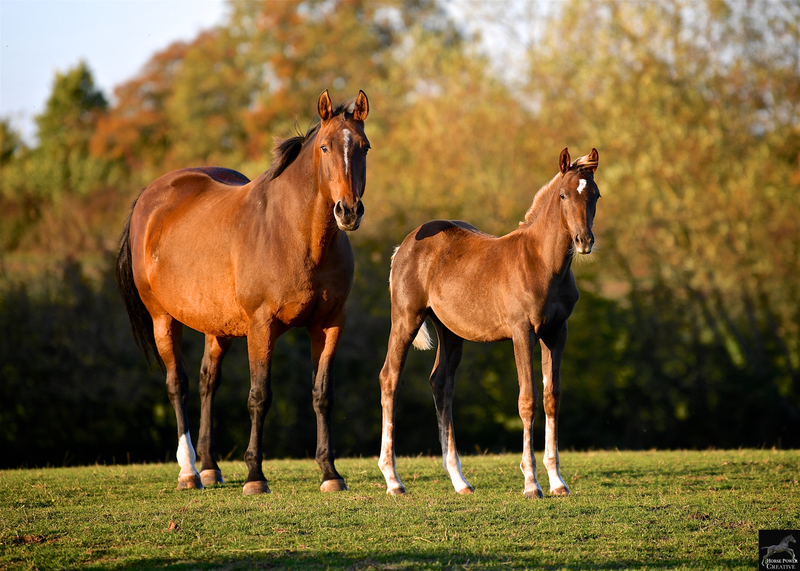To support its breeding goals and promote its breed standards, AES UK has created a programme of inspections and selections based on strong overriding principles of fairness and impartiality, transparency, accessibility and equality of opportunity. To promote these principles, evaluations are carried out by trained linear scorers and recorded on the public database. Evaluations are available in virtual and physical format, which promotes accessibility regardless of physical location and enhances equine welfare by taking away the need to travel long distances with youngstock and pregnant mares.
The AES UK cooperates with highly regarded professionals, veterinarians and institutions to offer an excellent service and to raise the profile and attainments of British breeding.

Selection Goals and Criteria
In addition to the breeding goals and optimum breed characteristics defined in sections 2 and 3 of this document, the AES has defined further strategic goals that it regards as important for the longevity and viability of sport horse breeding. The aim of the AES is to take responsibility in its role to enhance and support the equine-human relationship and to protect the equestrian industry’s social licence to operate.
Genetic Diversity
The AES closely monitors the genetic diversity of its breeding programme and recognises the challenge and tension between breeders’ desire to breed commercial stock from proven and fashionable stallions and performance mares on the one hand and the use of a wide variety of breeding lines on the other.
It is for that reason that the AES is known to give opportunity to a wide range of stallions to prove themselves, and it is also why the AES allows and encourages its breeders to use a wide range of lines and cross breeding as a tool to promote diversity.
Accessibility and Equal Opportunity
The fundamental philosophy of the AES is that the studbook needs to be there for the breeders, not the breeders for the studbook. This attitude extends beyond breeding to riders and owners.
It is for that reason that the AES is always open to the opportunities presented by digital technologies which can be used as a tool to provide opportunities to those who have historically been prevented from participating in studbook events, due to a range of factors, including physical location and physical ability.
By introducing a virtual route for evaluation and participation in studbook activities, the AES has taken active steps to remove potential barriers and make breeding more accessible.
Above all, this move enables the AES to offer useful feedback and advice to all breeders, including those who have not felt encouraged or able to engage in evaluation activities in the past, thus promoting excellence and offering support on a much wider basis than hitherto possible.

Welfare
Equine welfare is at the centre of the Social Licence to Operate and therefore key to the long-term survival of the sport horse breeding industry.
It is for that reason that the AES breeding, selections and evaluation programme has been designed with the happy equine athlete in mind.
Welfare and Evaluation Criteria
The AES studbook evaluations have been designed with clear welfare goals in mind. The overarching goal in all three Olympic disciplines is to support the breeding of sound horses who can enjoy success in the sport while remaining free from pain.
This is why all grading procedure have a “soundness assessment” element on hard ground, including for foals and broodmares, to evaluate correctness of conformation and to provide useful feedback not only in terms of future breeding selections, but also in terms of management advice to support the development of foals into sound horses and to ensure the comfort of broodmares. By giving two marks, one as the horse is presented at the point of evaluation, and one for the long term prospect under optimum management conditions, the AES provides active encouragement and incentives for breeders and owners to support their horses’ long term soundness.
Welfare and Evaluation Structure
The AES recognises that studbook inspections and evaluations can be stressful for horses and owners. We have learned that stress in owners and handlers can have a negative emotional impact on horses. We therefore seek to minimise personal stress by training all our staff in friendly and helpful conduct.
Virtual evaluations are a useful tool in reducing unnecessary stress to equines by taking away the need to travel and to allow the horses to present themselves in an environment familiar to them.
Physical evaluations with the AES are designed to reduce potential pressure and stress on the horses by taking some simple steps. Each horse is evaluated from start to finish, without the need to wait in between the different phases of the assessment.
Evaluations are never rushed. Evaluators are trained and encouraged to support the exhibitors of the horses to ensure they are presented in a relaxed manner showing their natural ability. Evaluators communicate with the owners and breeders to provide a relaxed atmosphere and encourage conversation.
Welfare and Performance Evaluations
The AES does not condone the over-testing particularly of young animals.
It does not regard the “performance testing” of young mares or stallions to be a useful methodology for the evaluation of performance ability, due to variables such as the riding ability of the test riders.
Above all, the AES considers that the potential risks for equine welfare in performance testing at a young age outweigh the potential benefits.
Instead, the AES considers national and international sports performance records, as well as the quality of offspring to be the more valuable indicators of the value of a stallion or mare as a breeding animal.
Health
The AES considers equine health to be of utmost importance and strongly related to equine welfare. It recognises that as a studbook, the AES has an important role to play in promoting health through:
Accurate record keeping to promote traceability and biosecurity
The AES works closely with the Central Equine Database and the digital stable to maintain high accuracy of records and to encourage owners, keeper and operators to update their records by making the process as easy as possible while ensuring excellent data integrity.
Design of studbook activities in a way that minimises equine health risks
By introducing virtual evaluation formats, and by implanting a “each horse start to finish” approach to physical evaluations, the AES minimises the risk of the spreading of infectious diseases.
Including a strong equine health element in its studbook selection programme
The AES includes a strong health element in its studbook evaluations in the soundness assessment on the ground, which accommodates observations about nutrition and foot balance.
For stallion gradings, the AES has a stringent and detailed veterinary assessment protocol, including x-rays, which are used to determine the likelihood of a stallion to stay sound and have a long lasting and successful sporting career. X-rays are not a reliable indicator of the presence of genetic conditions, and are not used for that purpose.
In its new Select Studbook, the AES awards a Health Premium to horses who score highly in their soundness assessment and who have undergone genetic testing.
The AES continues to participate in the development and screening for known genetic conditions, with the WFFS status of each horse recorded on its database.
As a sport horse studbook, the AES recognises that the genetic characteristics of its breeding population share similarities with other WBFSH member studbooks in the UK and in Europe. The AES also recognises that the potential of DNA evaluation can only be fully explored by working together.
It is for that reason that the AES has always been actively supporting and participating in the work of the WBFSH Scientific Advisory Committee and other related initiatives. AES evaluators are regular attendees and speakers at the WBFSH annual linear scoring workshops. AES members have chaired numerous WBFSH workshop sessions, and the AES now has a board member at the WBFSH in Dr Eva-Maria Broomer who is a Vice President of the organisation.
The AES also supports the work of British Breeding and the British Breeding Futurity to facilitate the collection of accurate cross studbook phenotype data in view of supporting future initiatives that benefit all British breeders.
The AES continues to invest in its DNA testing facility, including the purchase of SNP testing Iscan machines to lay the foundation for future genomic evaluations.





